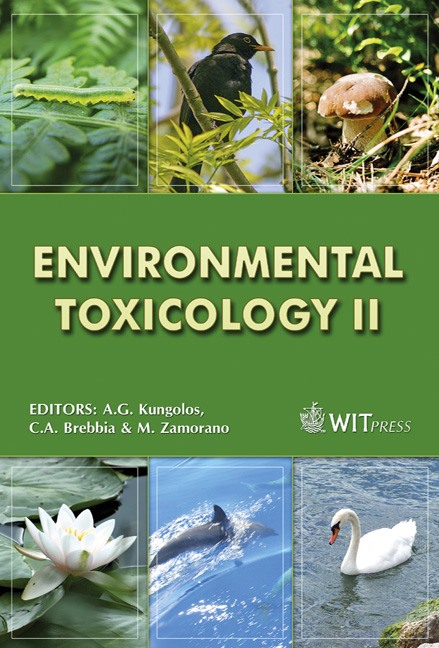Evolution Of Acute Toxicity Of Non-ionic Surfactants Over The Biodegradation Process
Price
Free (open access)
Transaction
Volume
110
Pages
7
Page Range
101 - 107
Published
2008
Size
332 kb
Paper DOI
10.2495/ETOX080111
Copyright
WIT Press
Author(s)
E. Jurado, M. Fernández-Serrano, J. Núñez, M. Lechuga & G. Luzón
Abstract
The present work examines the toxicity of two non-ionic surfactants widely used in current detergent formulations: a fatty-alcohol ethoxylate, Findet 1214N/23 (R(-O-CH2-CH2)n-OH: 70% C12 and 30% C14; 11 average ethylene oxide units) and nonylphenol polyethoxylate with 9.5 average ethylene oxide units. The biodegradation tests were made according to the OECD 301 E test for ready biodegradability. These tests were made at different starting concentrations: 15, 20, 25, and 50 mg/L for Findet 1214N/23, and 5, 25, and 50 mg/L for nonylphenol polyethoxylate. Toxicity was assessed with the LumiStox® 300 system, consisting of an instrument for measuring bioluminescence and an incubation unit according to the UNE-EN ISO 11348-2 guideline. This method is based on the luminous intensity of marine bacteria of the strain Vibrio fisheri NRRL-B-11177 after a certain exposure time to a toxic substance. The toxicity value was calculated as EC50, which is the surfactant concentration that inhibits 50% after 15 min of exposure. Also, the change in toxicity was tracked during the biodegradation process in order to appraise the environmental risk posed by the products during this process. In these assays, the toxicity was expressed as a percentage of inhibition. Keywords: toxicity, biodegradation, bioluminescent organisms, non-ionic surfactants. 1 Introduction The detergent and cleaning-products industry in Spain represents more than 1620 million euros annually, generating thousands of jobs and producing some 1.8
Keywords
toxicity, biodegradation, bioluminescent organisms, non-ionic surfactants.





